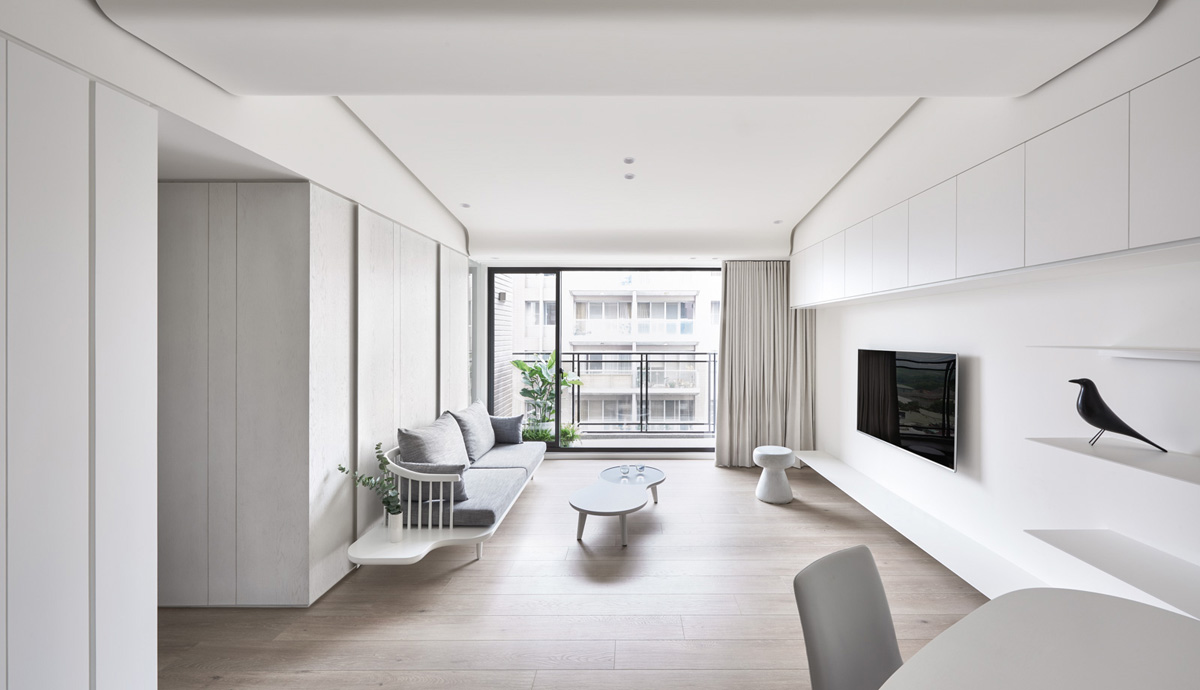
The Great Interior Conundrum Ah, the interior of a small apartment—an enigma wrapped in four walls, boxed in by limited square footage. I’ve been there, staring down at my pint-sized palace, wondering how to make it feel less like a shoebox and more like a Swiss Army knife. It’s a place where every inch counts, furniture pulls double duty like an overworked barista, and creativity spills over like too much cream in your coffee. Yes, the interior challenge is real, my friends.
A Dance of Duality: Furniture That Does More Imagine your sofa moonlighting as a bed or coffee table hiding a treasure trove of blankets and board games. These pieces aren’t furniture; they’re the trapeze artists of the design world, balancing form and function with a daring flip. Multifunctional furniture is the bread and butter (or the avocado toast?) of small-apartment living.
But let’s get one thing straight—this isn’t your grandmother’s clunky fold-out couch. Today’s designs are sleek, clever, and often so subtle you’d miss their secret identities if you blinked. A sofa with a pop-up desk for your laptop? It’s not a seat—it’s your co-worker. A bed that folds into the wall and transforms into a dining table? Now, that’s what I call a space-saving symphony.
Walls: The Silent Superheroes Ever notice how walls are like the unsung heroes of interiors? They hold everything up and keep you dry during a thunderstorm, yet we often ignore them like wallpaper in a dimly lit room. In small apartments, though, walls can become your best ally. Pegboards, floating shelves, and vertical gardens—they all whisper, “Use me wisely.”
Take pegboards, for instance. These humble sheets of perforated metal or wood are the MacGyver of home decor. Hang your pots, pans, keys, or even a miniature herb garden. Shelves? They’re the bookshelves’ cooler, edgier cousins. You can stack your treasures high, keeping the floor clear for impromptu dance parties (yes, even in 300 square feet).
Light It Up: The Illusion of Space Let’s talk about light—natural or artificial, it’s the magician’s wand of interior design. I once hung a giant mirror opposite a window, and bam! My tiny living room felt like it had doubled in size. It was like an optical illusion straight out of a magician’s handbook. Who knew a slab of reflective glass could make me feel so spacious?
Lighting, too, is a game changer. Layered lighting, they call it. Think pendant lights, floor lamps, and under-cabinet LEDs that pool together to create depth and dimension. It’s not illumination; it’s an art form.
Zones: The Art of Invisible Boundaries Here’s a nugget of wisdom—your space might be small, but your imagination isn’t. Creating distinct zones in an open-plan layout is like drawing boundaries without putting up walls. Think of rugs as fences for your furniture. One defines the living area, and the other establishes the workspace. Suddenly, your studio feels like a one-bedroom.
Room dividers are the unsung poets of this strategy. A bookshelf, a curtain, or a folding screen can separate your sleeping quarters from your Netflix binge zone. Pro tip: choose dividers that double as storage—two birds, one stone, and zero extra clutter.
The Decluttering Gospel Now, I’m not here to preach minimalism like it’s the only religion of small-space living. But let’s face it, holding onto every ticket stub and chipped coffee mug “just in case” isn’t doing your apartment—or your sanity—any favors.
Channel your inner Marie Kondo or, better yet, your inner pirate. Does it spark joy or deserve to walk the plank? If it’s the latter, toss it into the abyss of forgotten things. A clean space is a happy space; every knick-knack matters when working with limited square footage.
Color Me Impressed: The Psychology of Hues Color isn’t about aesthetics—it’s a mood, a vibe, a statement. Light colors like whites, creams, and pastels are the bread-and-butter go-to for making a space feel larger. But who says you can’t throw in a bold accent wall or a splash of mustard yellow? It’s like adding a kick of hot sauce to an otherwise bland dish.
Even patterns can play their part. Stripes, for example, can elongate or widen a room, depending on how they run. Think of your walls as a canvas; your paintbrush is your chance to defy the spatial odds.
Tech That Saves the Day Smart homes aren’t for tech geeks—they’re for anyone with a small apartment and a big dream. Consider motorized blinds that open at the crack of dawn or voice-activated lights that save you the trip across the room. A robot vacuum? It’s practically your new roommate.
And let’s not forget modular furniture with built-in tech. A coffee table that charges your phone wirelessly? Now, that’s the 21st-century solution we didn’t know we needed. Technology, my friends, is like the secret sauce in a recipe—it makes everything better.
Green Living: Plants Are More Than Pretty Faces. Lastly, let’s discuss greenery. Plants don’t look good; they breathe life into your interior. A small apartment filled with plants is like a rainforest in the middle of a concrete jungle. Vertical gardens, hanging planters, or a simple pot on your windowsill—it all counts.
And here’s the kicker: plants can make your space feel larger. How? By drawing the eye upward and adding layers of interest. Plus, they improve air quality, so you’re not living smart—you’re living clean.
The Interior Epilogue At the end of the day, small apartments are less about limitations and more about opportunities. Designing multifunctional spaces isn’t necessary; it’s a celebration of creativity, a dance with design that defies conventions. It’s about turning a cramped interior into a canvas of innovation.
So, whether folding your bed into the wall or hanging your entire kitchen on a pegboard, remember that your interior reflects your ingenuity. And if nothing else, you’ll always have a story about when your couch turned into an office.

